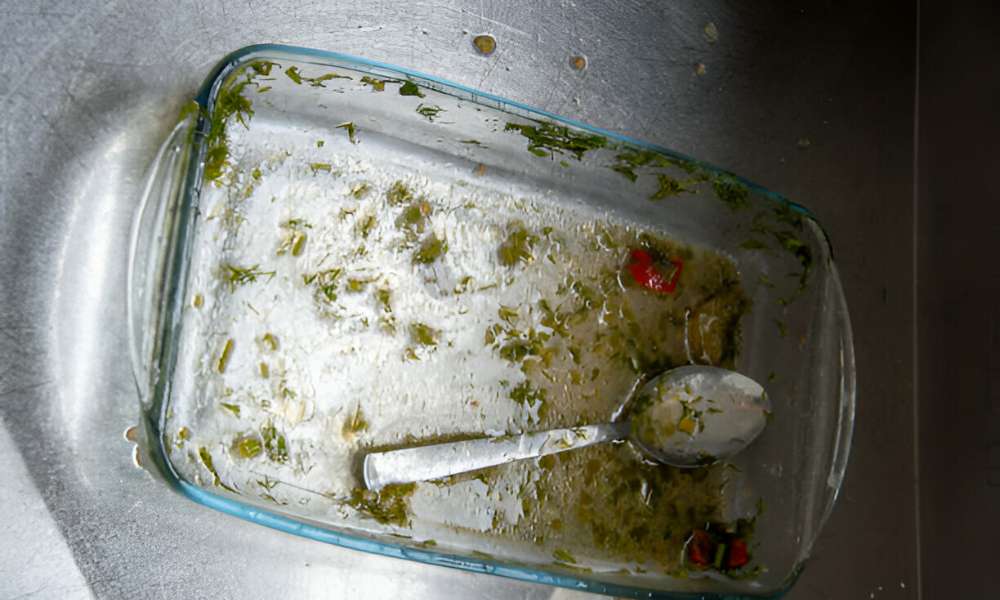Cleaning glass cookware effectively is essential for maintaining its sparkling appearance and ensuring safe, flavor-free cooking. Glass pots and pans are popular in many kitchens due to their ability to withstand high temperatures and their non-reactive nature, meaning they won’t interfere with the taste of your food. However, without proper care, glass cookware can accumulate stubborn stains and residue that diminish its appearance and functionality. In this guide on how to clean glass cookware, we’ll explore various techniques and tips to keep your glass items not only functional but also looking like new. Whether you’re dealing with everyday food residue or tough, baked-on stains, this guide will provide you with the practical advice needed to tackle any cleaning challenge.
1. Explore Glass Cookware Essentials
Glass cookware, favored for its sleek appearance and non-reactive surface, primarily comes in two types: borosilicate and tempered glass. Borosilicate is renowned for its remarkable resistance to thermal shock, making it ideal for sudden temperature changes, while tempered glass boasts enhanced strength and durability, often used in oven-safe dishes and bakeware. Owners of glass cookware commonly encounter issues such as staining and cloudiness, which can detract from the aesthetic appeal and potentially affect cooking performance. Proper maintenance and cleaning are essential to address these challenges and preserve the functional beauty of these kitchen essentials.
2. Daily Cleaning Techniques
For daily maintenance of glass cookware, a gentle yet effective approach is best. Washing by hand with mild dish soap and warm water is recommended to prevent damage and address most residues and oils. If you prefer the convenience of a dishwasher, most glass cookware is dishwasher safe, though it’s wise to check the manufacturer’s recommendations to avoid any mishaps. After washing, drying glass cookware thoroughly with a soft, lint-free cloth can help prevent water spots, keeping your dishes sparkling clean. Additionally, ensuring that your cookware is dried immediately rather than air drying can further reduce the likelihood of water spots and streaks, maintaining the clarity and shine of the glass.
3. Removing Stuck-On Food and Stains
When faced with stuck-on food and stubborn stains on glass cookware, a few effective strategies can restore its cleanliness. Soaking the cookware in hot, soapy water for several hours is often enough to loosen even the most stubborn residues, making them easier to wipe away. For those tougher spots, gentle abrasives like baking soda can be used. Create a paste with water and apply it to the stained areas, allowing it to sit before scrubbing lightly with a soft sponge; this method is effective without risking scratches. Additionally, natural cleaning agents such as vinegar can be use to tackle cloudiness and discoloration. A solution of equal parts water and vinegar can be applied to the glass, providing a natural and effective way to enhance its clarity and shine. These methods ensure that your glass cookware remains in optimal condition, combining effectiveness with care to maintain its longevity.
4. Dealing with Burnt Stains and Scorch Marks
Dealing with burnt stains and scorch marks on glass cookware requires a careful approach to avoid damage. Start by soaking the affected area in a mixture of hot water and dish soap to soften the burnt residue. After soaking, gently scrub the area with a non-abrasive sponge or brush to avoid scratching the surface. If the stain persists, consider using a commercial glass cookware cleaner designed for severe stains; these products are formulate to tackle tough grime without harming the glass. As a precaution, always read the cleaner’s instructions and test it on a small area first. Additionally, avoid using harsh scouring pads or abrasive materials that could etch or scratch the glass. By following these steps, you can effectively remove challenging stains and maintain the integrity and appearance of your glass cookware.
5. Special Considerations for Different Types of Glass Cookware
Different types of glass cookware, such as borosilicate and tempered glass, require specific care to maximize their lifespan and maintain their performance. Borosilicate glass, known for its high thermal resistance, should be use carefully with sudden temperature changes; although resistant, it is best to avoid direct heat sources like stovetops. Tempered glass, while tougher and less prone to breaking from impact, also benefits from careful handling, particularly avoiding extreme temperature changes that can cause it to shatter. For both types, regular gentle cleaning, avoiding abrasive cleaners, and storing them in locations where they won’t be knock or dropped are crucial.
6. Preventive Measures and Best Practices
To ensure your glass cookware remains in top condition, adopting preventive measures and best practices is essential. Routine maintenance, such as regular gentle washing and immediate drying, helps keep the glass looking new and prevents the buildup of grime and stains. It’s crucial to avoid common cleaning mistakes like using abrasive scrubbers or harsh chemicals that can scratch and weaken the glass. When storing glass cookware, choose a stable, secure location where pieces are not stacke heavily on each other. Use soft liners like felt or cloth between items to prevent chipping and cracking.
Conclusion
Maintaining your glass cookware with proper cleaning and care not only preserves its aesthetic appeal but also ensures its longevity and functionality in your kitchen. By understanding the specific needs of different types of glass, such as borosilicate and tempered, and implementing daily cleaning routines, you can effectively manage common issues like stains and cloudiness. Regularly employing gentle cleaning methods, embracing the right maintenance techniques, and observing preventive measures will keep your cookware in pristine condition. Remember, the beauty and durability of glass cookware depend significantly on how well it is looke after. With these tips and best practices, you are well-equippe to keep your glass cookware looking as good as new, ready to handle any culinary challenge you throw its way.

